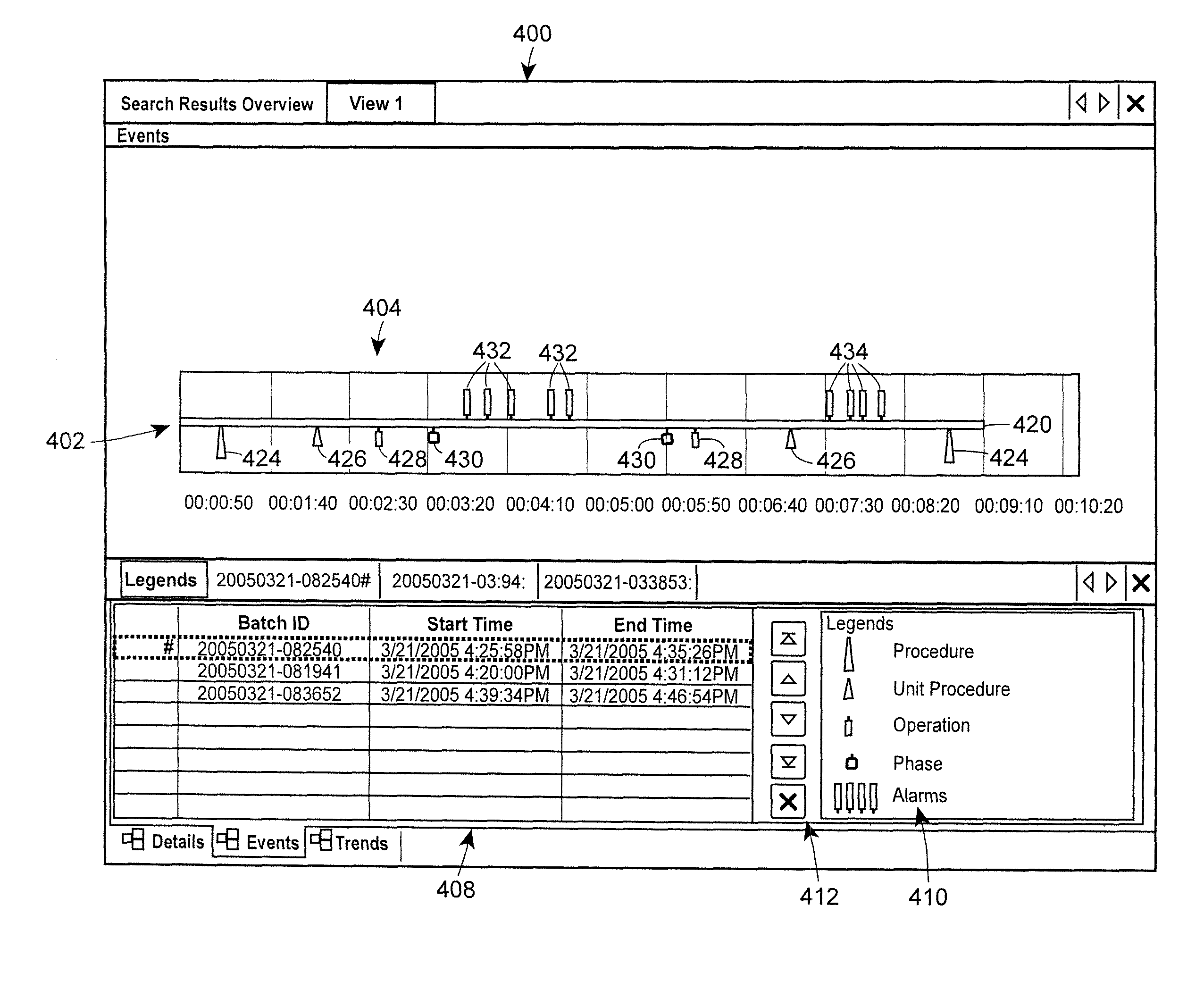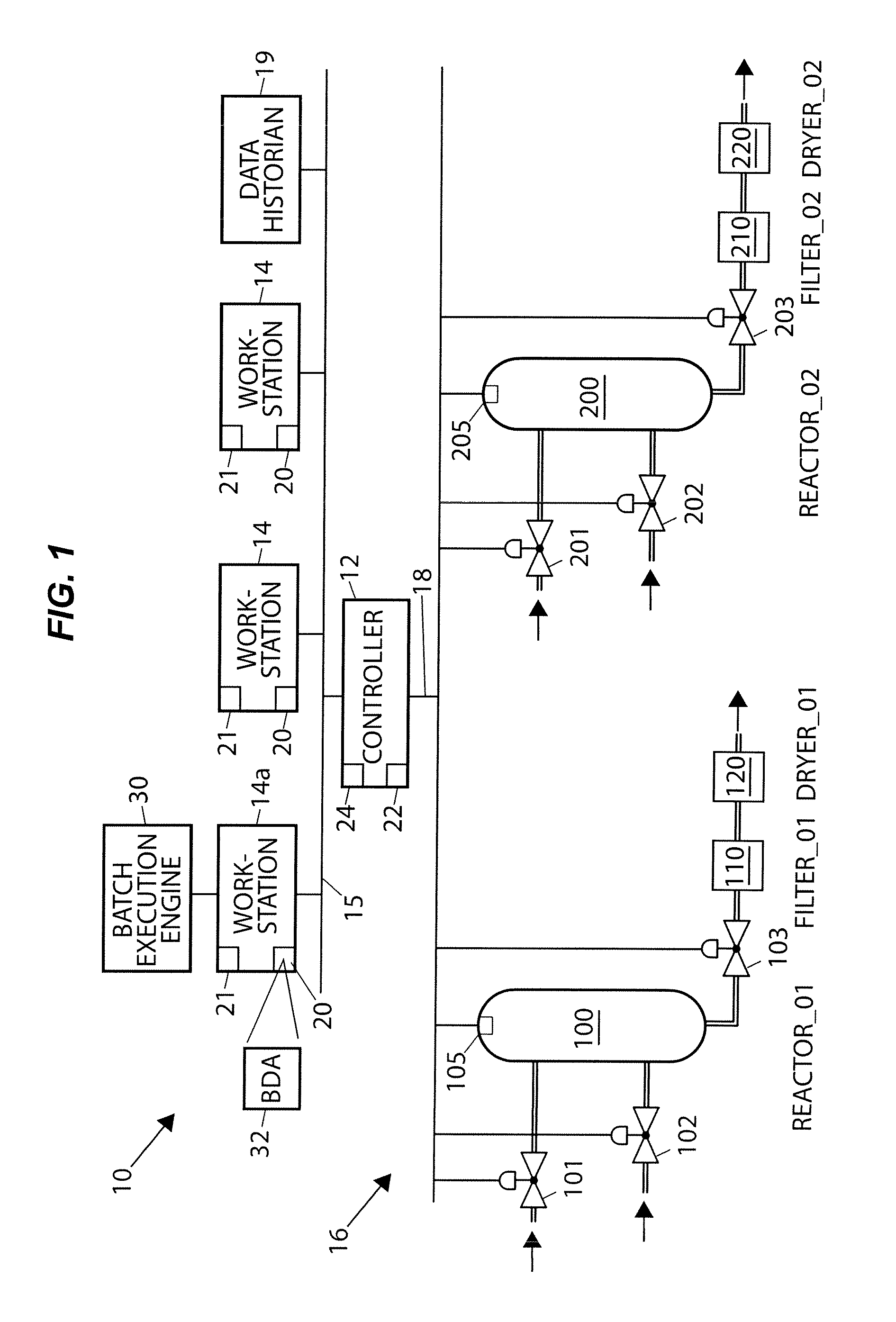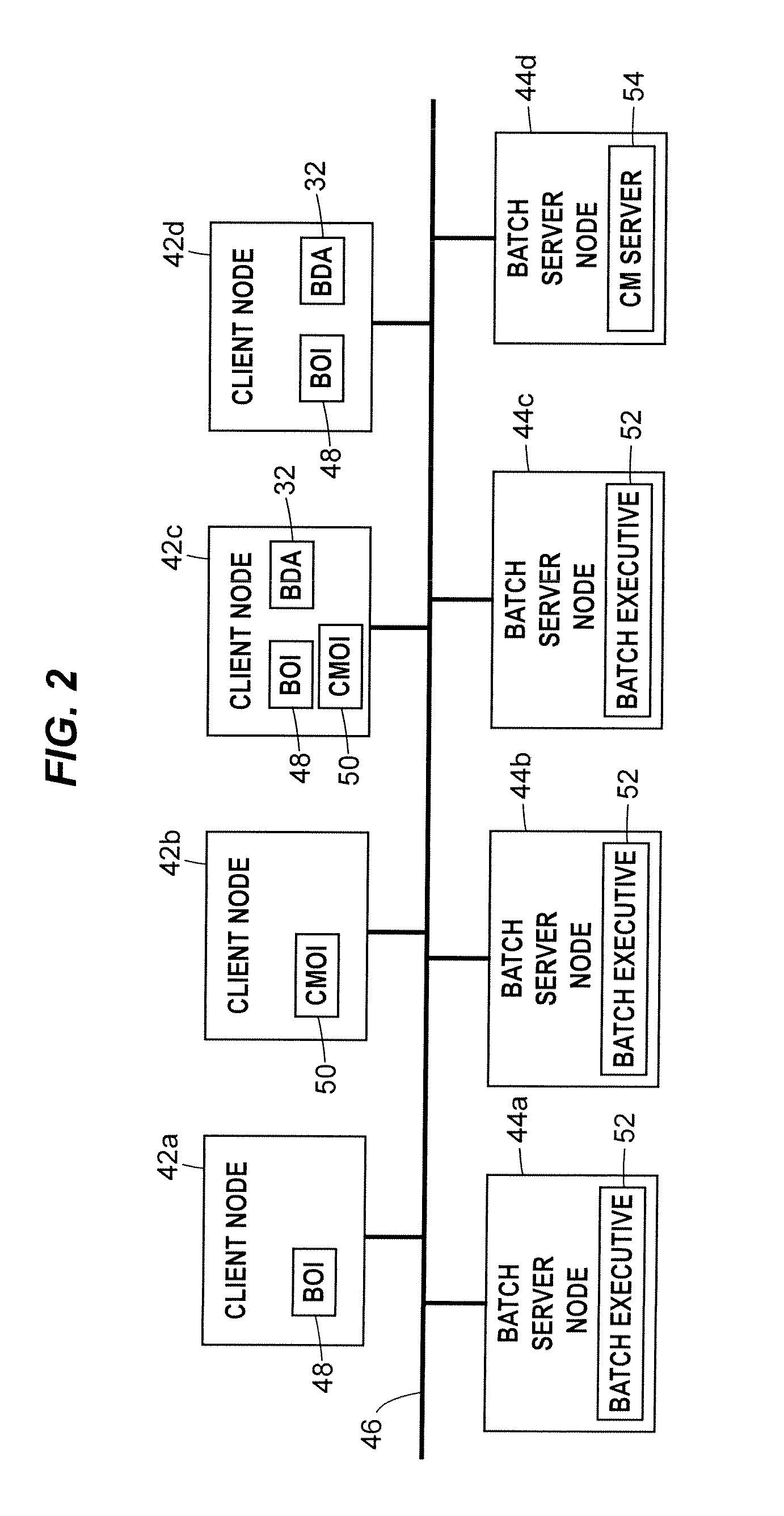Compact batch viewing techniques for use in batch processes
a batch processing and batch technology, applied in the field of process control networks, can solve the problems of cumbersome user interface, many presently available tools, and inability to integrate with other tools, and achieve the effect of quick and easy examination, easy viewing or understanding
- Summary
- Abstract
- Description
- Claims
- Application Information
AI Technical Summary
Benefits of technology
Problems solved by technology
Method used
Image
Examples
Embodiment Construction
[0029]Referring now to FIG. 1, a process plant control network 10 includes a process controller 12 coupled to numerous workstations 14 via, for example, a local area network (LAN) 15, which may in one example be an Ethernet communications connection. The controller 12 is also coupled to devices or equipment within a process plant (generally designated by the reference numeral 16) via one or more input / output (I / O) devices (not shown) and a set of communication lines and / or a bus 18. The controller 12, which may be by way of example only, the DeltaV™ Batch controller sold by Emerson Process Management, is capable of communicating with control elements, such as field devices and function blocks within field devices distributed throughout the process plant 16 to perform one or more process control routines to thereby implement desired control of the process plant 16. These process control routines may be continuous process control routines but will be described herein as batch process ...
PUM
 Login to View More
Login to View More Abstract
Description
Claims
Application Information
 Login to View More
Login to View More - R&D
- Intellectual Property
- Life Sciences
- Materials
- Tech Scout
- Unparalleled Data Quality
- Higher Quality Content
- 60% Fewer Hallucinations
Browse by: Latest US Patents, China's latest patents, Technical Efficacy Thesaurus, Application Domain, Technology Topic, Popular Technical Reports.
© 2025 PatSnap. All rights reserved.Legal|Privacy policy|Modern Slavery Act Transparency Statement|Sitemap|About US| Contact US: help@patsnap.com



